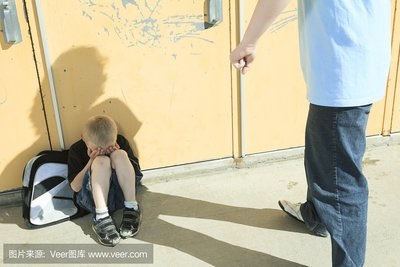男孩子需要玩打架游戏吗?
本期作者:Psychology心理探寻
If you watch a group of boys playing outside, chances are, at some point, one boy is going to leap on top of another. There will be a lot of yelling and ferocious roars, but also lots of grins. Other boys will try to pull the first boy off or grab on, too, and they'll all end up in a pile on the ground.
如果你观察一群男孩子在户外玩,很可能他们玩着玩着,就会有一个男孩子跳到另一个男孩子身上。然后就会咆哮阵阵,同时也会笑声连连。其他男孩会试图把第一个男孩子拉开或者抓住,最终所有男孩子就都堆叠在了地上。
If there's an adult around, especially a woman, the odds are good that the adult will tell the boys, "Stop that right now before someone gets hurt!"
如果周围有成年人,尤其是女性,那么很可能这位成年人就会告诉这些男孩子:马上停,避免有人受伤!
How Common is Rough-and-Tumble Play?
打斗游戏有多么普遍?
Rough-and-tumble play, also called horseplay, roughhousing, or play fighting is a common activity among children. It starts in the toddler years and becomes increasingly common until late elementary or middle school.
打斗游戏,或者粗野游戏,或玩打架游戏,在孩子之中是一种普遍活动。从蹒跚学步时期开始,直到小学或初中时期,会越来越普遍。
About 60 percent of elementary school boys say they’ve done play fighting, but this is not the only way boys play. Even among 11-year-old boys—the most frequent participants in rough play—it comprises only a tenth of what they do in their free time. Also, not every boy participates in rough play. About 40 percent of boys say they don’t like play fighting, so they tend to play other games (Smith, 2010).
约有60%的小学男生说他们曾经玩过打架游戏,但这并非男孩子们的唯一游戏方式。即使在一群11岁男孩之中——这个年龄段的男孩子是打斗游戏最频繁的参与者——这种打斗游戏也不过只占据他们个人自由时间1/10的比例。另外,也并非每个男孩子都参与打斗游戏。约有40%的男孩子说他们不喜欢玩打架游戏,他们喜欢其他游戏。
Telling the Difference Between Play Fighting and Real Fighting
打架游戏和真正打架之间的区别
Research in which people are shown video recordings of boys engaged in real or play fights tends to show that it’s sometimes hard to tell these apart. Eight- and 11-year-old children were able to correctly identify the type of fighting about 85 percent of the time. Adult men were correct in classifying 70 percent of the scenes. Adult women who grew up with brothers were about as accurate as men, but women who hadn’t grown up with brothers mostly thought that all of the videos involved real fighting (e.g., Conner, 1989; see summary in Pellis & Pellis, 2012).
在一项研究中,让研究对象观看男孩子玩打架游戏和真打架的视频,结果发现有时候很难区分二者。8至11岁的孩子能够有85%的几率正确识别二者。成年人只能正确辨别70%的场景。从小和哥哥或弟弟一起长大的女性正确率同成年男性一样,但没有和兄弟一起长大的女性大部分都觉得所有视频都是在真的打架。
It turns out there are very specific differences between play fighting and real fighting (Fry, 2005; Smith, 2010). In rough play, kids are smiling and having a good time; in real fights they’re angry or crying. In rough play, kids take turns “attacking” and being “attacked” and they’re careful not to push or hit too hard. In real fights, the kids are trying to hurt each other. Rough play often involves a whole group of kids, and they continue playing together happily afterwards. Real fights usually involve only two kids, and they don’t want to be together afterwards.
实际上在打架游戏和真打架之间是有着非常明确的区别的。
在打斗游戏中,孩子们都在笑,而且都很开心,他们轮流扮演攻击者和被攻击者,而且会小心翼翼不会出手很重,这类游戏通常有一整群小孩子参与,而且事后也依旧会一起玩得很开心。
但在真的打架时,他们很生气或会在哭,他们会试图伤害彼此。而且通常只有两个小孩子参与,而且打完架之后他们会不想再和对方玩。
The Appeal of Rough Play
打斗游戏的魅力
The appeal of rough play is the physical challenge of testing their strength and the exciting idea of being powerful. Among young boys, roughhousing often involves pretending to be superheroes or good guys and bad guys.
打斗游戏的魅力在于对孩子们肢体力量的挑战,以及美妙的强大感。在低龄男孩群体中,打斗游戏往往包含扮演超级英雄或好人和坏人的戏份。
Adults, especially women who aren’t personally familiar with rough play, often try to stop roughhousing because they don’t want anyone to get hurt. But research tells us that, overall, rough play turns into a real fight only about 1 percent of the time among elementary school boys (Smith, 2010).
但成年人,尤其是不熟悉打斗游戏的女性,通常试图制止这类游戏,因为他们不想让任何人受伤。但研究告诉我们,整体而言,在小学生群体中,打斗游戏演变为真正打架的几率只有1/100。
In order to have fun with rough play, kids need to know how to do it right—to keep it light by taking turns, not being too rough, and not overreacting or getting offended when there's no mean intent. Usually, it’s kids who have trouble with self-control who end up causing injuries in rough play. Children who are rejected by their peers get overly aggressive in about one-fourth of roughhousing episodes (Pellegrini, 1994).
想要从打斗游戏中充分获得乐趣,孩子们需要知道正确玩打斗游戏的方式——轮流扮演角色、动作不要太重,当别人没有恶意时,不反应过激,不觉得自己被冒犯。在打斗游戏中,通常,是那些在自我控制能力方面存在困难的孩子伤害到同伴。被同伴排斥和拒绝的孩子在打斗游戏中有1/4的几率变得过度具有攻击性。
Kids who get out of hand with roughhousing may benefit most from "coaching" in supervised rough-and-tumble play. Intriguing research by neuroscientist Jaak Panksepp shows that giving young, hyperactive kids lots of opportunity to play fight helps them learn to inhibit their behavior. If your child has trouble being too rough, it may help to practice play fighting with a parent. Be sure to end with the parent being gently but firmly dominant.
对于在打斗游戏中失控的孩子,对他们最有益的方式是在他们玩打斗游戏时监管他们,而且指导他们。神经学家 Jaak Panksepp在这一方面开展的一项有趣研究表明,给低龄、超活跃的孩子大量玩打架游戏的机会,可以帮助他们抑制个人行为。如果你的孩子总是动作很粗野,不妨让他们和父母练习玩打架游戏,但在游戏最后,一定要确保父母以温柔但坚定的方式占据主导地位。
If you're not sure whether your kids are engaged in a play fight or a real fight, ask, "Is everyone having fun?" If not, they need to stop. For your own peace of mind, it's fine to insist, "That's an outdoor game!" You may also want to set up a code word that your kids can use to call a stop to the action. "No," "Stop," or "Don't" aren't good code words because they can be part of the play. Help your kids choose an off-topic word, such as "Bananas." When someone says the code word, everyone has to let go and move back.
如果你不确定你的孩子是在参与打架游戏还是在真打架,问他们是否每个人都玩得开心。如果不是,那么他们就需要停止。为了让自己放心,完全可以告诉自己:这是一种户外游戏!你可能还需要设定一个安全词,让孩子可以用来叫停游戏。“不要”、“停止”等词汇并不是很理想的安全词,因为它们可能会是游戏的一部分。让孩子选一个与游戏无关的词,比如“香蕉”。当有人说出这个安全词时,大家都必须放手后退。
During the adolescent years, play fighting becomes less innocent (Fry, 2005). From about age 11 onwards, rough play has an underlying theme of establishing a dominance hierarchy. Boys tend to challenge other boys whom they perceive as slightly weaker. If the weaker boy quickly expresses distress, the fighting becomes more playful. If he doesn’t give in right away, both boys may behave in increasingly aggressive ways until there’s a clear winner.
在青春期时段,打架游戏就没那么单纯了。从大约11岁起,打架游戏就开始有一种底层主题:建立支配权等级体系。男孩子常常去挑战其他在他们看来较弱的男孩子。如果较弱的男孩子很快表现出痛苦,那么这种打架就会更加偏向于玩闹。但如果他并没有立即屈服,两个男孩就可能会越来越具有攻击性,直至分出胜负。
Among tween and teen boys, rough play is most common in a new group, where the boys don't know each other, and it becomes less frequent once a dominance hierarchy is established. Tweens and teens need adults to act as safety railings, allowing their high-spirited play, but making sure they don't go too far and end up seriously hurting each other.
在青少年男孩群体中,打斗游戏在新成立群体中最为普遍,在这种新群体中,孩子们还彼此不认识,而且随着支配权等级体系得以建立,这种打斗游戏会越来越少。
青少年男孩子们需要成年人作为他们的“安全护栏”,让他们在尽兴玩耍的同时,确保他们不会太过分,不会严重伤害彼此。
Did you do rough play as a child? Do you think, as a society, we've become too restrictive of rough-and-tumble play, or are we not restrictive enough?
你在儿童时期玩打斗游戏吗?你认为,就整个社会而言,我们对打斗游戏是太过于限制,还是限制得还不够呢?












